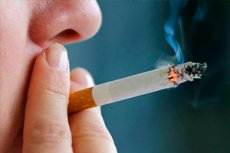
Tobacco smoke studies have been conducted for many years, identifying many pollutants, including toxic metals. However, exactly which of these metals can be classified as second- or tertiary smoke has remained a mystery to the research community. The problem is that many of the metals found in tobacco smoke can also come from industrial or natural sources of indoor and outdoor air pollution.
Now, a recent study by scientists from the Lawrence Berkeley Laboratory (Berkeley Lab) has identified 28 trace metals in tobacco smoke. The results, published inEnvironmental Science & Technology Letterspresents new evidence of the long-term health effects of second-hand and tertiary tobacco smoke. Secondhand smoke is the smoke emitted by a burning cigarette. Tertiary smoke is harmful tobacco residues that settle on indoor surfaces after the cigarette goes out.
"It is important to quantify trace metals from second-hand and tertiary smoke because some trace metals are present in other sources of indoor and outdoor air pollution. For more than a decade, our group has studied toxic organic pollutants released by smoking. We are now also interested in "Completing the picture of the ongoing legacy of smoke by assessing how trace metals may contribute to a healthy tobacco burden," said Hugo Destaillats, the study's principal investigator and senior scientist in the Indoor Environment group at Berkeley Lab's Energy Technologies Area.
In experiments in a chamber simulating room conditions, the team from the Indoor Environment group collected samples of aerosol particles within 43 hours after six cigarettes burned. To characterize secondary smoke, they used Teflon filters to capture freshly emitted aerosol immediately after smoldering. They then took additional samples over longer periods to characterize the tertiary smoke.
Co-author Wenming Dong, a postdoctoral fellow at Berkeley Lab's Earth and Environmental Sciences Area (EESA), used advanced triple quadrupole inductively coupled plasma mass spectrometry (QQQ ICP-MS) at EESA's Aquatic Geochemistry Laboratory to detect significant levels of 28 traces. Metals in secondary and tertiary smoke. Among them were toxic metals such as cadmium, arsenic, chromium, beryllium and manganese.
To better understand how trace metals may contribute to the chemistry of second-hand and tertiary smoke, the researchers used experimental results from a chamber study to predict trace metal concentrations in a smoker's home and in non-residential scenarios such as smoking bars, at different levels of exchange. Air. In nearly all simulated scenarios, they found that predicted concentrations of cadmium, arsenic, and chromium in indoor air exceeded California's cancer risk guidelines. They also found that some of these metals exceeded state reference levels for chronic exposure without cancer.
Berkeley Lab researchers note that this study is a first step in understanding how tobacco smoke may contribute to overall indoor trace metal exposure, and that more work is needed to advance methods to eliminate second-hand and tertiary smoke pollution.
"In smoking environments, these trace metals are found in indoor air as well as on surfaces and dust particles, and people can be exposed to them through routes such as dermal absorption and ingestion," said Xiaochen Tang, a researcher at Energy Analysis and Environmental Impacts Division at Energy Technologies Area Berkeley Lab and first author of the study. "We focused our analysis on inhaled airborne metal pollutants, so our results represent only a portion of overall exposure. Given the persistence of trace metals in the environment, it is important to better understand the effectiveness of ventilation, cleaning, and vacuuming as mechanisms for removing these pollutants."

